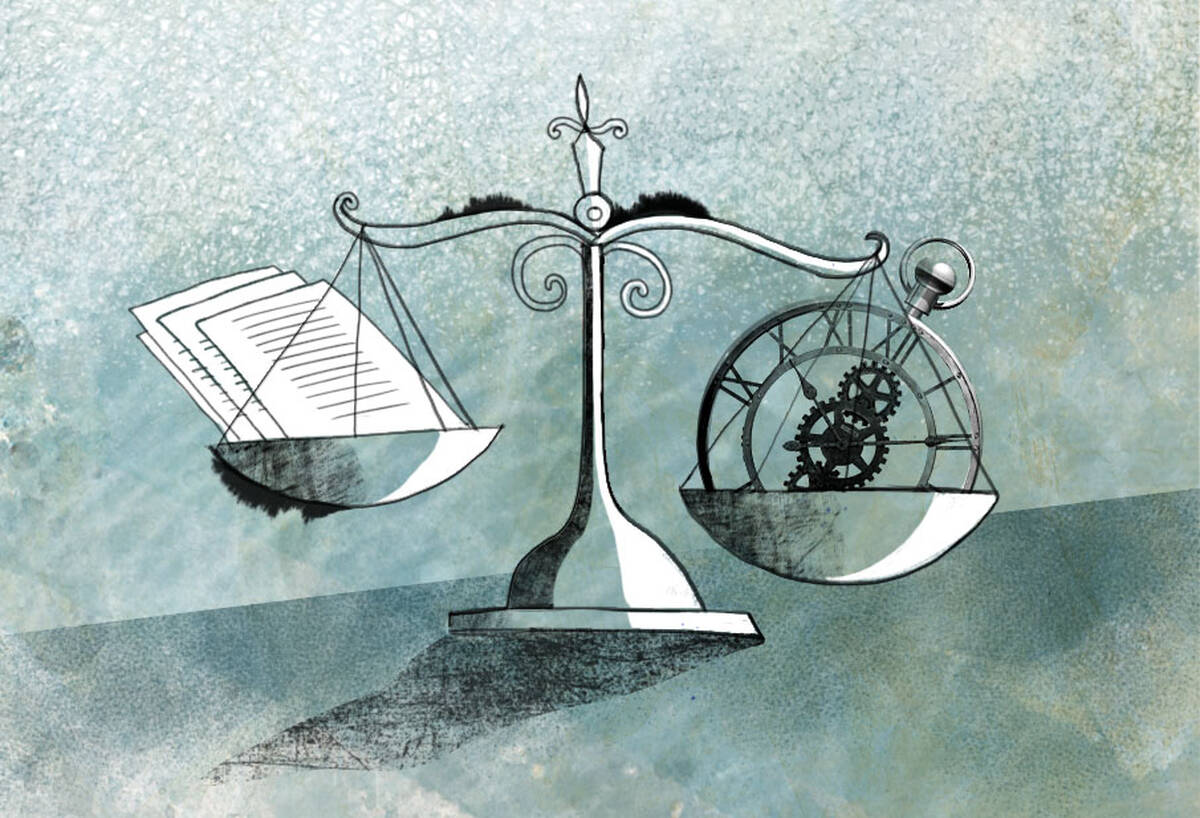Wouldn’t it be great if there were a scheduling fix that would save considerable time simply by changing the order in which tasks are addressed? A new study from two Kellogg School professors tested this idea by altering the way Italian appellate labor court judges schedule court hearings. The courts, which handle cases having to do with firings and pensions, are critical to the functioning of the economy, but are notoriously slow. In Italian appellate courts, cases stretch out 4.7 times longer than the average case in the 34 countries that make up the Organization for Economic Cooperation and Development (OECD). Such inefficiency results in “reduced investments, slow growth, and a difficult business environment,” according to the International Monetary Fund.
There are likely multiple factors at play in the striking inefficiency of Italy’s courts, but the method judges use to schedule their cases turns out to be a key one, according to research by Robert Bray and Nicola Persico of the Kellogg School.
Bray, Persico, and their coauthors—Decio Coviello of HEC Montreal and Andrea Ichino of the University of Bologna—worked with six appellate labor court judges in Rome to implement a new scheduling method over a three-year period. Using this new method cut the time it took to resolve a case by 140 days, or 19 percent, relative to judges who used the traditional method.
The research has important implications for anyone whose workload involves juggling multiple projects. It also has implications for national economies. “It’s not healthy for a society if you can’t resolve disputes in a timely fashion,” says Bray, an assistant professor of managerial economics and decision sciences.
Who’s Next?
The judges, who have hundreds of cases open at any given time, have three givens.
First, they can hold only one hearing at a time. Second, it takes more than one hearing to resolve a case. And third, it is impossible to know in advance exactly how many hearings a case will take.”Judges typically put each new hearing at the end of the queue, finding the first open slot in the calendar and filling it. They also wait until the conclusion of the current hearing to schedule a new one.
The method’s advantage is simplicity: it requires no forethought. But is there a method that is more efficient? Another option—the one tested by the researchers—is to have judges estimate the number of hearings the case will require and schedule all of them at the outset, leaving just enough time between them for lawyers to prepare for the hearing.
The advantage of this method is that once a case comes before the court, it will be resolved relatively quickly, since the hearings are spaced just a few weeks apart. The drawback is that when several hearings are scheduled up front, the queue becomes much longer, meaning, it will take much longer for a new case to actually reach the court for the first hearing.
“Looking at one policy versus the other,” Bray says, “it’s not clear which one will be better—cycling through the queue four times or cycling through it once but having the queue four times as large.”
The second strategy proved far more efficient in moving cases through the system by reducing the flow time, which is the time it takes to resolve a case.
But why?
Tried and True
The key is the “hazard rate,” the likelihood that a case will be resolved with each subsequent hearing.
An increasing hazard rate is “just a fancy way of saying that the probability that the case is going to finish increases as the case gets older,” Bray says. In other words, there is a slim chance that case will be resolved in the first hearing, but a good chance in the second hearing, a very good chance in the third hearing, and so on. It perhaps seems obvious that the rate would increase. But possible pitfalls make that far from certain. Each hearing has the potential to introduce new complications. If that happens, a resolution becomes less likely as the case gets bogged down, and the hazard rate declines.
The authors had data showing that the hazard rate for cases in the Italian labor courts did in fact increase. (It declined after the third hearing in a few categories of cases. But because most cases were resolved before a fourth hearing, the effect of those exceptions on the overall data was negligible.)
The model that the authors created posits that when the hazard rate increases, the most efficient strategy is to keep working on a case until it is completed. Scheduling all of a case’s hearings at once, and ensuring that they happen as quickly as possible, tests that theory. It gives priority to cases that are already open—and moving closer to resolution—over new cases.
The gain in efficiency comes from the fact that when hearings are scheduled in advance, and grouped close together, a case moves through the system quickly once it reaches the first hearing. It is unaffected by what happens with other cases. When each new hearing is put at the end of the queue, by contrast, every delay slows down every open case by creating a longer queue.
However, in a different system where the hazard rate decreases, the scheduling method the researchers tested would not increase efficiency. In those instances, it would be best to use the system that the judges had traditionally implemented of putting each new hearing at the end of the queue.
A Better Use of Time
The revised scheduling method is a “somewhat crude” intervention, the authors write, that could be refined and improved. But “the fact that such a blunt instrument cut flow times by a fifth suggests that there is much fat to trim.”The research into court schedules is relevant for increasing the productivity of individual workers, according to Persico, professor of managerial economics and decision sciences. Fundamentally, it is about how to multitask more efficiently.
“For knowledge workers and managerial positions, there is evidence from time diaries that all sorts of workers schedule their workflow ineffectively, in the sense that they tend to jump from one task to another too frequently,” Persico said. “They spread themselves thin, and then they achieve less than they would if they worked on something until completion.
“If we can teach these Italian justices to do it better,” he says, “then presumably there’s work to be done in teaching employees to schedule their own workflow better.”




